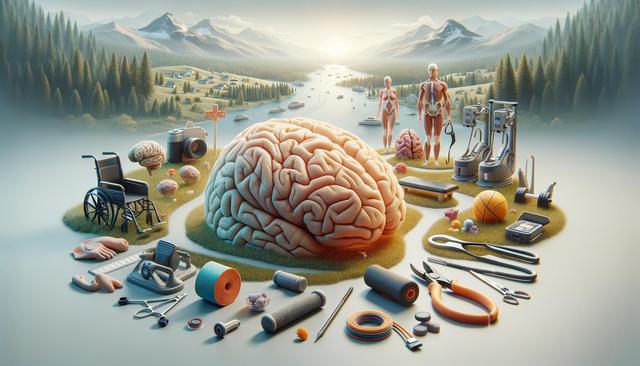Understanding Stroke and Its Impact
A stroke occurs when the blood supply to a part of the brain is interrupted or reduced, preventing brain tissue from getting the oxygen and nutrients it needs. Depending on the part of the brain affected, a stroke can lead to a wide range of physical and cognitive impairments. These may include difficulty with speech and language, loss of coordination, muscle weakness, and challenges with memory or problem-solving. The severity and type of therapy required often depend on the extent of the damage and the individual’s overall health. Understanding the impact of stroke is essential to tailor therapy goals and strategies for each patient.
Stroke therapy typically begins as soon as the patient is medically stable. Early intervention is associated with better outcomes, as the brain is most adaptable to change shortly after the injury. The goal of therapy is to help individuals regain as much independence as possible by focusing on restoring lost abilities and finding alternative strategies to perform everyday tasks.
Key Components of Stroke Rehabilitation
Effective stroke rehabilitation is usually multidisciplinary, involving a team of healthcare professionals such as physical therapists, occupational therapists, speech-language pathologists, neurologists, and rehabilitation nurses. Each professional contributes a unique perspective and expertise to guide the patient’s recovery journey. Key components of stroke therapy often include:
- Physical therapy: Focuses on improving mobility, balance, and muscle strength.
- Occupational therapy: Helps patients relearn daily activities such as dressing, cooking, or using tools.
- Speech and language therapy: Aims to restore communication skills and address swallowing difficulties.
- Cognitive rehabilitation: Supports memory, attention, and problem-solving functions.
Consistency and patience are crucial in rehabilitation. Progress may be gradual, but with continuous effort and the right support, meaningful improvement is often possible.
Innovative Approaches to Therapy
In recent years, stroke therapy has benefited from technological advances and innovative treatment approaches. Robotic-assisted therapy, for instance, enhances physical rehabilitation by providing repetitive and targeted movements, which can promote neural rewiring. Virtual reality (VR) tools are being used to simulate real-world environments, offering engaging ways to practice motor and cognitive skills. Another promising area is neuromodulation, which involves using electrical or magnetic stimulation to enhance brain function and support recovery.
These methods are not universally suitable for all patients, and their effectiveness can vary. However, for many individuals, they offer additional pathways to recovery when used alongside traditional therapies. Research continues to explore the long-term benefits and optimal use of these technologies in stroke rehabilitation.
The Role of Family and Caregivers
Family members and caregivers play a pivotal role in the recovery process. Their involvement can significantly influence the patient’s motivation and emotional well-being. Caregivers often assist with daily routines, accompany patients to therapy sessions, and provide encouragement during difficult times. They may also need to adapt the home environment to promote safety and independence, such as installing grab bars or modifying furniture arrangements.
Support for caregivers is equally important. They may experience physical and emotional strain, especially when managing long-term care. Access to caregiver education, respite services, and support groups can help alleviate stress and improve the overall rehabilitation experience for both patients and their families.
Long-Term Recovery and Lifestyle Adjustments
Stroke recovery does not end when formal therapy concludes. Long-term recovery often involves ongoing practice of skills, lifestyle changes, and regular medical follow-ups. Many individuals benefit from community-based programs, outpatient therapy, or home exercises to maintain and build on their progress. Patients are encouraged to adopt heart-healthy habits, including:
- Maintaining a balanced diet
- Engaging in regular physical activity
- Managing blood pressure and other chronic conditions
- Avoiding smoking and limiting alcohol consumption
Psychological support is also important. Depression and anxiety are common after stroke and can hinder recovery. Mental health professionals can provide therapy and strategies to cope with emotional challenges, helping individuals regain confidence and a sense of control.
Conclusion: Supporting a Lifelong Journey
Stroke therapy is a multifaceted process that requires time, dedication, and collaboration between patients, professionals, and caregivers. While every recovery journey is unique, early intervention, personalized care plans, and emotional support can make a significant difference. As research evolves and new therapies emerge, there is increasing potential to enhance outcomes and improve quality of life for stroke survivors. For individuals recovering from a stroke and those supporting them, staying informed and engaged is essential to navigating the path to recovery effectively.







